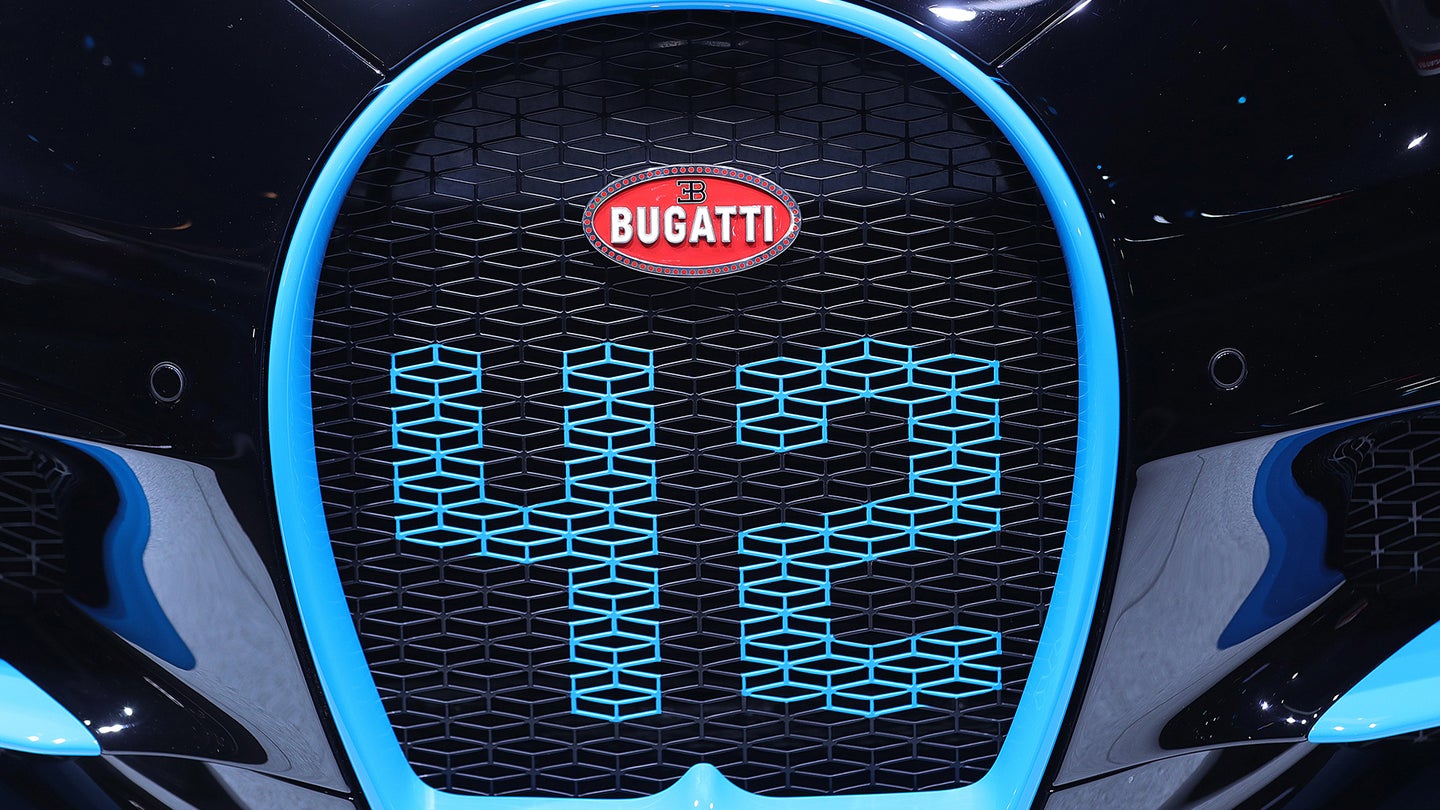Bugatti Just 3-D Printed the World’s Largest Brake Caliper
Printable parts open up a whole new world of performance for manufacturers.

Bugatti, like many manufacturers, has dabbled in 3-D printing. Proven to be a godsend to engineers looking to produce rapid prototypes, 3-D printing has enabled automakers to envision a product and immediately make a tangible item at a fraction of the cost. Now, Bugatti has taken it a step further in development and produced the world's largest eight-piston monoblock brake caliper using a 3-D printer.
Currently, if your only criteria for buying a new car is that it has the world's largest brakes, you'd be in the market for a Bugatti Chiron. Of course, you would also be paying $3 million to own the 1,500-horsepower car, but the stopping power to bring the 4,400-pound beast from its top speed of 261 mph to a halt would have to be gargantuan.
If the engineers at Bugatti weren't allowed to keep breaking its own records, we couldn't live in a world where hypercars continue to exist. The company is continually looking to improve its products through means of pioneering innovation and product development, meaning that we're likely to see a lot more records from Bugatti during the development of the Chiron's successor.
For example, those big brakes you were eyeing up while car shopping earlier won't be the biggest for long. Bugatti has now broken its own record by one-upping the caliper size, making its new eight-piston monobloc caliper the largest in the industry with dimensions of 12.2-inches long by more than 8-inches wide. The caliper itself is manufactured using 3-D printable titanium, and while it might not be Koenigsegg's 3-D printed variable turbo, it's still impressive to see a 3-D printer contributing to making the largest functional titanium component on a vehicle.
“As our performance data are often at the physical limits, we are especially demanding,” said Frank Götzke, head of Bugatti's technical development, “In our continuing development efforts, we are always considering how new materials and processes can be used to make our current model even better and how future vehicles of our brand could be designed.”
Bugatti also notes that the additive production methods in which the titanium part is manufactured results in an extremely strong tensile strength. In fact, it would take 275 pound-feet of force to be applied to a surface area of 1-square-millimeter in order to cause rupturing of the material. Given the fact that the caliper itself weighs less than 11 pounds, this is a fairly amazing feat.
It wasn't long ago that Bugatti's parent company, Volkswagen, spoke of mass producing parts using 3-D printers. Bugatti, in particular, saw value in titanium while 3-D printing due to the difficulty of casting or milling a single component out of titanium due to the material's robust strength. Combined with a lead time of only three months from concept to tangible product, the rapid development of this part ensures that the newfound love of printable parts is both efficient and innovative.
